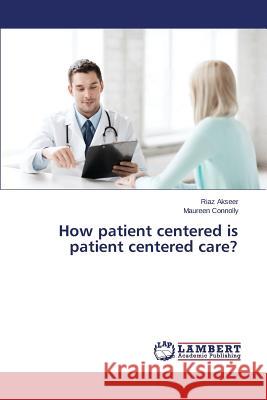How patient centered is patient centered care? » książka
How patient centered is patient centered care?
ISBN-13: 9783659782671 / Angielski / Miękka / 2015 / 316 str.
Despite recent well-known advancements in patient care in the medical fields, such as patient-centeredness and evidence-based medicine and practice, there is rather less known about their effects on the particulars of clinician-patient encounters. The emphasis in clinical encounters remains mostly on treatment and diagnosis and less on communicative competency or engagement for medical professionals. The concept of "patient-centeredness" was introduced by Balint (1957) over 5 decades ago and has been studied in health research for the past few decades. Patient-centeredness gained its popularity in healthcare in the late 90s (Bechtel & Ness, 2010). However, despite being the most frequently discussed topic in medical practice (Bechtel & Ness, 2010; Boyle, Dwinnell, & Platt, 2005), it may not be entirely responsive to patients' needs as its development has been mainly physician-driven with limited patient input (Bechtel & Ness, 2010).
Despite recent well-known advancements in patient care in the medical fields, such as patient-centeredness and evidence-based medicine and practice, there is rather less known about their effects on the particulars of clinician-patient encounters. The emphasis in clinical encounters remains mostly on treatment and diagnosis and less on communicative competency or engagement for medical professionals. The concept of "patient-centeredness" was introduced by Balint (1957) over 5 decades ago and has been studied in health research for the past few decades. Patient-centeredness gained its popularity in healthcare in the late 90s (Bechtel & Ness, 2010). However, despite being the most frequently discussed topic in medical practice (Bechtel & Ness, 2010; Boyle, Dwinnell, & Platt, 2005), it may not be entirely responsive to patients needs as its development has been mainly physician-driven with limited patient input (Bechtel & Ness, 2010).











